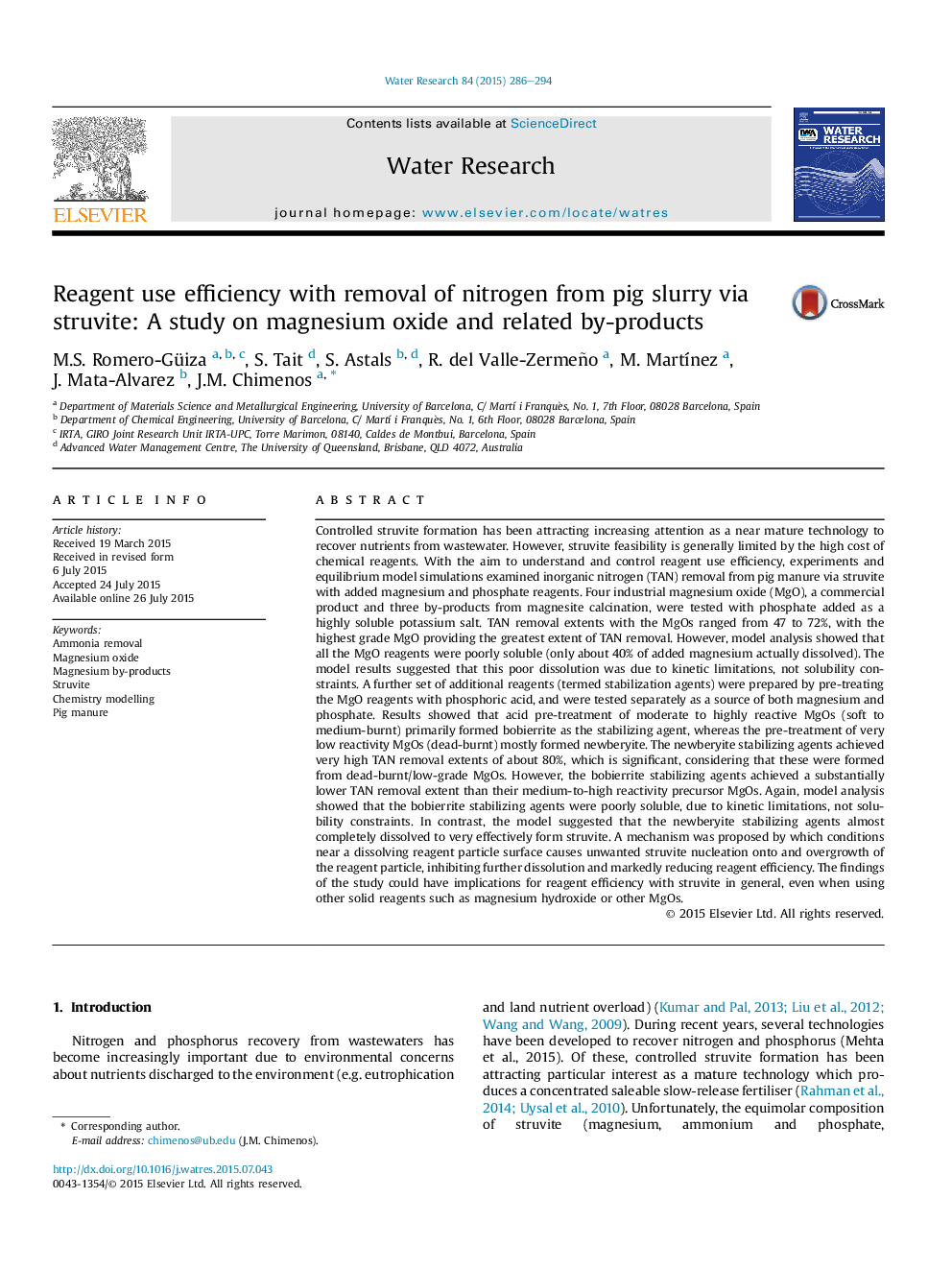| کد مقاله | کد نشریه | سال انتشار | مقاله انگلیسی | نسخه تمام متن |
|---|---|---|---|---|
| 4481096 | 1623084 | 2015 | 9 صفحه PDF | دانلود رایگان |

• Experiments and chemistry modelling of struvite formation with MgO reagents.
• Phosphoric acid pre-treated MgO reagents were also tested separately.
• Reagent dissolution strongly limited magnesium or phosphate supply to struvite.
• Struvite overgrowth may be restricting dissolution of reagent particles.
• Acid pretreatment is able to largely improve precipitation yields for low-grade MgOs.
Controlled struvite formation has been attracting increasing attention as a near mature technology to recover nutrients from wastewater. However, struvite feasibility is generally limited by the high cost of chemical reagents. With the aim to understand and control reagent use efficiency, experiments and equilibrium model simulations examined inorganic nitrogen (TAN) removal from pig manure via struvite with added magnesium and phosphate reagents. Four industrial magnesium oxide (MgO), a commercial product and three by-products from magnesite calcination, were tested with phosphate added as a highly soluble potassium salt. TAN removal extents with the MgOs ranged from 47 to 72%, with the highest grade MgO providing the greatest extent of TAN removal. However, model analysis showed that all the MgO reagents were poorly soluble (only about 40% of added magnesium actually dissolved). The model results suggested that this poor dissolution was due to kinetic limitations, not solubility constraints. A further set of additional reagents (termed stabilization agents) were prepared by pre-treating the MgO reagents with phosphoric acid, and were tested separately as a source of both magnesium and phosphate. Results showed that acid pre-treatment of moderate to highly reactive MgOs (soft to medium-burnt) primarily formed bobierrite as the stabilizing agent, whereas the pre-treatment of very low reactivity MgOs (dead-burnt) mostly formed newberyite. The newberyite stabilizing agents achieved very high TAN removal extents of about 80%, which is significant, considering that these were formed from dead-burnt/low-grade MgOs. However, the bobierrite stabilizing agents achieved a substantially lower TAN removal extent than their medium-to-high reactivity precursor MgOs. Again, model analysis showed that the bobierrite stabilizing agents were poorly soluble, due to kinetic limitations, not solubility constraints. In contrast, the model suggested that the newberyite stabilizing agents almost completely dissolved to very effectively form struvite. A mechanism was proposed by which conditions near a dissolving reagent particle surface causes unwanted struvite nucleation onto and overgrowth of the reagent particle, inhibiting further dissolution and markedly reducing reagent efficiency. The findings of the study could have implications for reagent efficiency with struvite in general, even when using other solid reagents such as magnesium hydroxide or other MgOs.
Figure optionsDownload high-quality image (197 K)Download as PowerPoint slide
Journal: Water Research - Volume 84, 1 November 2015, Pages 286–294